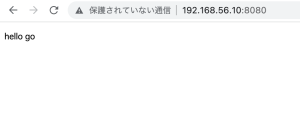docker-compose.yml
version: '3.3'
services:
mysql:
image: mysql:5.7.28
restart: unless-stopped
networks:
- wp_net
volumes:
- mysql_volume:/var/lib/mysql
environment:
MYSQL_ROOT_PASSWORD: password
MYSQL_DATABASE: wordpress
MYSQL_USER: wordpress
MYSQL_PASSWORD: password
wordpress:
image: wordpress:5.2.3-php7.3-apache
restart: unless-stopped
depends_on:
- mysql
networks:
- wp_net
ports:
- 8080:80
environment:
WORDPRESS_DB_HOST: mysql:3306
WORDPRESS_DB_NAME: wordpress
WORDPRESS_DB_USER: wordpress
WORDPRESS_DB_PASSWORD: password
networks:
wp_net:
driver: bridge
volumes:
mysql_volume:
driver: local
うおおおおおおおおおお
これはやばい

